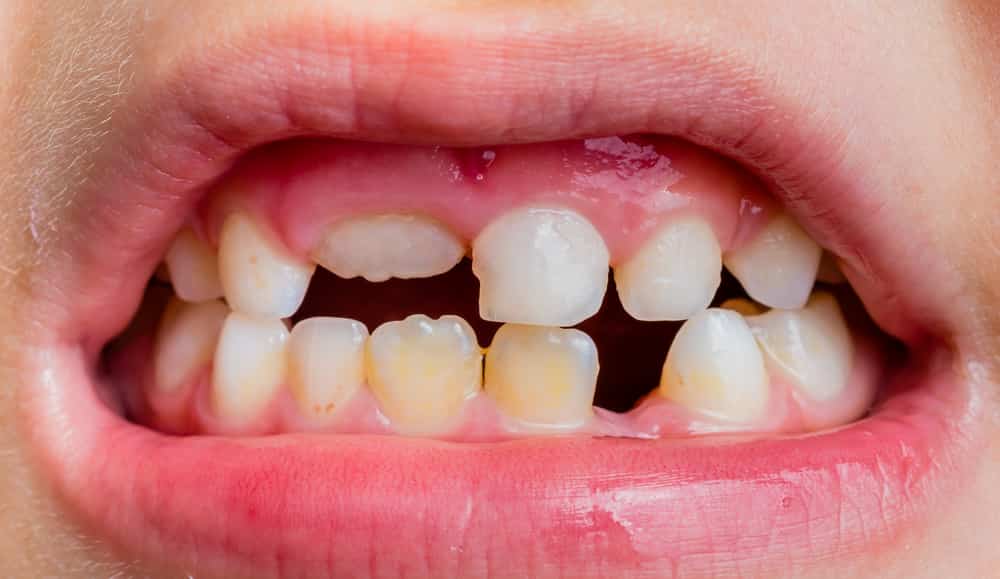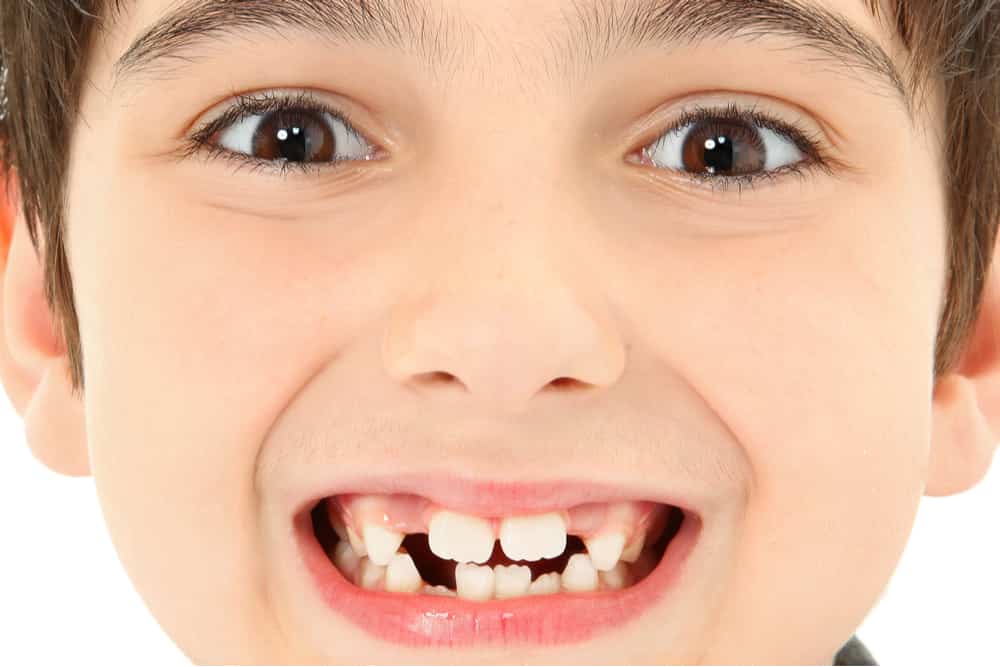
At around age 7, the front baby teeth are lost and permanent teeth starting coming in on the front. There are a few things that parents notice when their child’s first permanent teeth come in. In this blog post, we discuss your most common concerns when the fist permanent teeth come in.

The teeth look much bigger than the baby teeth! Is there going to be room for all of them?
1) The front permanent teeth are much bigger than the baby ones they replace. They also look relatively big because the teeth adjacent to them are still small. That leads to a phase of crowding. Teeth start looking crooked. That crowding phase does not necessarily last forever. Not all permanent teeth are bigger than the baby teeth. Some are smaller and some are bigger. Some of the crowding might improve within a few months, but some crowdings get worse. American Association of Orthodontists recommends first orthodontic appointment of your child be done at age 7. Your orthodontist will be able to tell you if there is any impending crowding. Most of the times, your orthodontist will only monitor the progress and no treatment is needed. Sometimes, there is a serious shortage of space for all permanent teeth and some preventative measures are required to open up room for permanent teeth.

2) The teeth looked chipped. Parents often notice some bumps of the edges of the front teeth and wonder if the teeth got chipped before they even had a chance to fully come in. The bumps of the edges of the front teeth are called mamelons. According to some dentists, they look like the serrations on a steak knife. Mamelons are completely normal and are seen on all the teeth when they first come in.
What should be done about the mamelons?
Mamelons do not last forever. As your child learns to bite on the food with the front teeth and during chewing, the mamelons gradually wear down and that leads to a much smoother and straighter edge on the front teeth.
If your child’s bite is not right, then teeth do not fit in the right position, and as a result, mamelons might not wear down and will stay through adulthood. Therefore, in some people mamelons might still be visible until much later in life.
Your orthodontist can check the mamelons and your child’s bite for you to confirm if anything needs to be done or if you can just “wait and watch” until the mamelons go away. Sometimes, orthodontic treatment is needed to improve the bite. Here in Redmond, at iSmile Orthodontics, Dr. Sepi will do an exam on your child and will determine if anything needs to be done or you can just wait and watch!